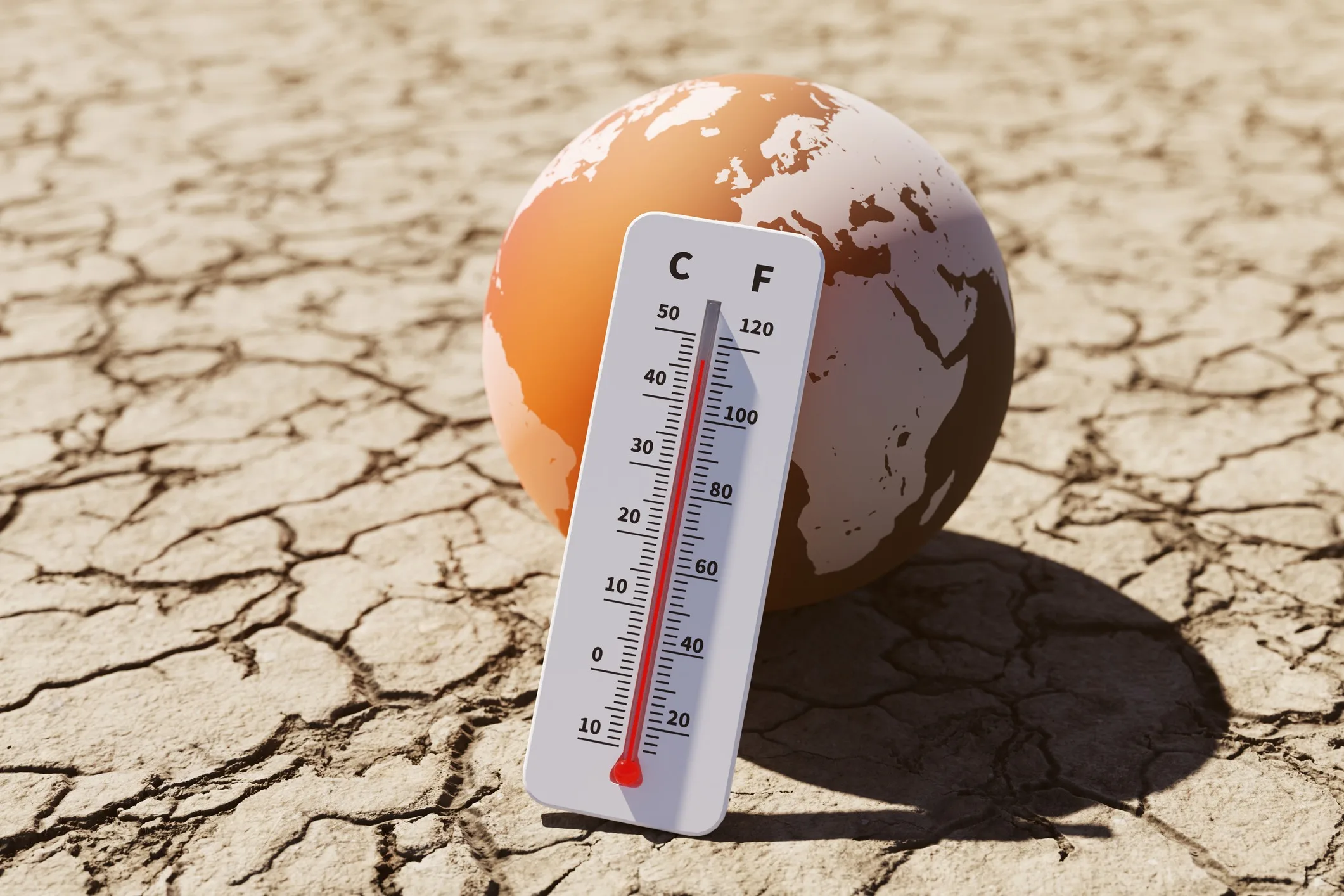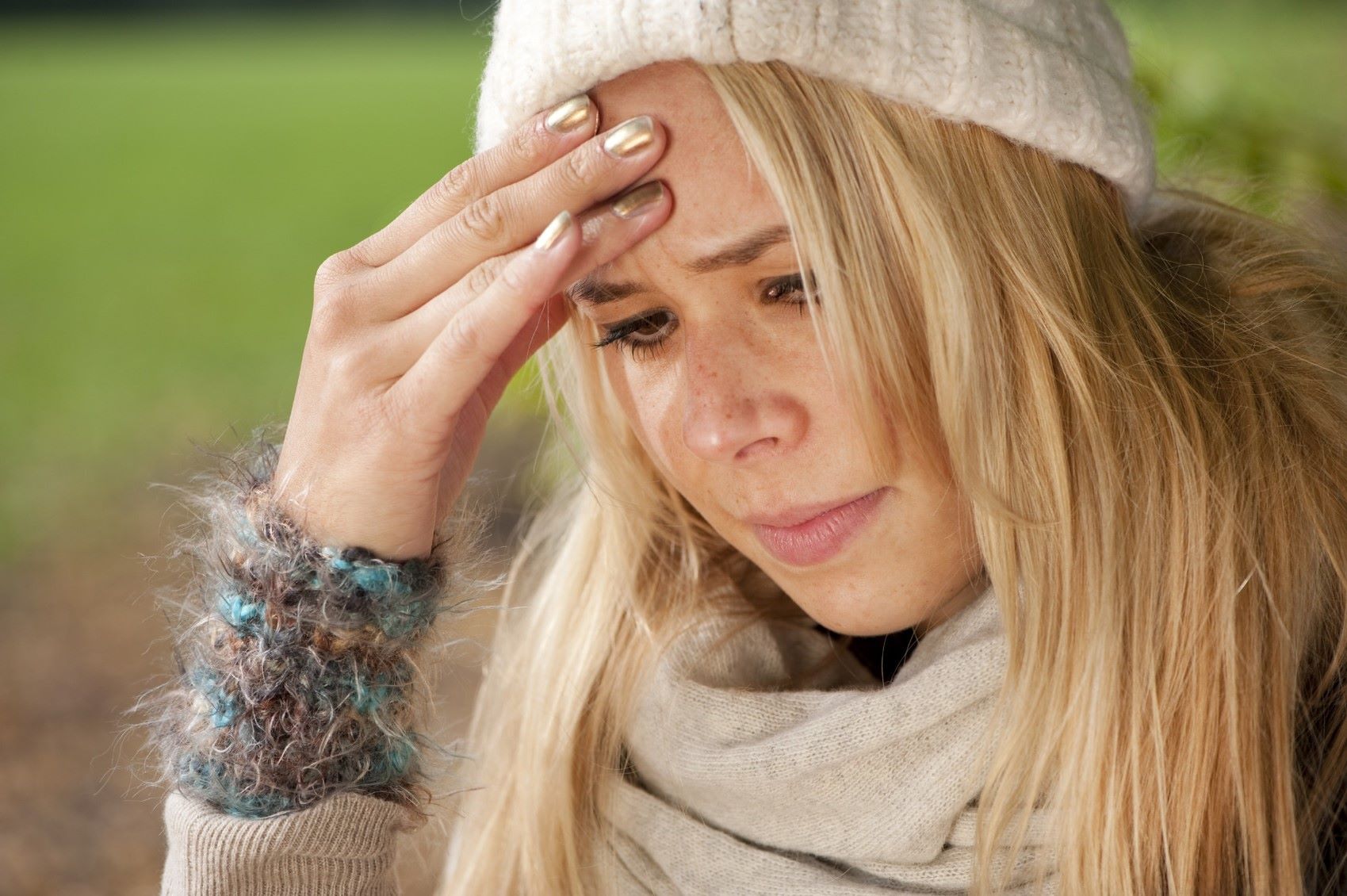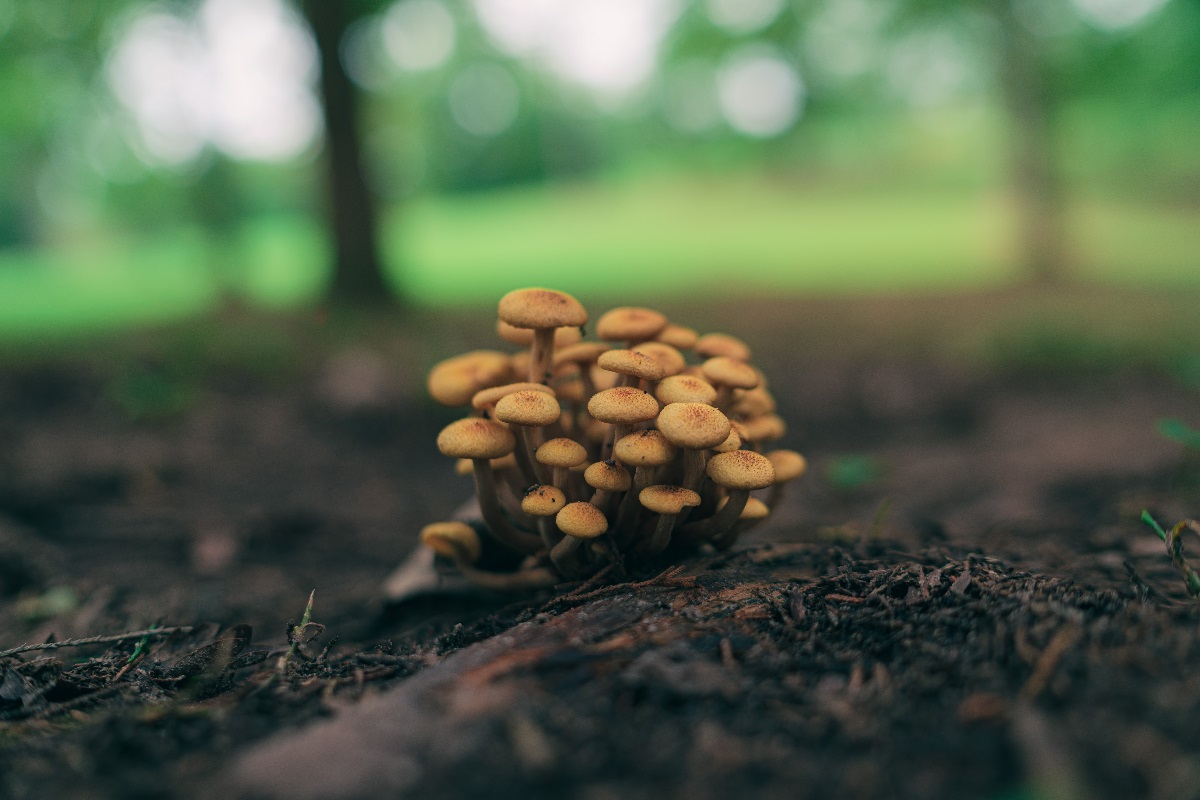Home>Weather and Climate>The Impact Of Negative Temperatures On Airplane Flight


Weather and Climate
The Impact Of Negative Temperatures On Airplane Flight
Published: April 7, 2024
Discover how weather and climate, specifically negative temperatures, can affect airplane flight. Learn about the impact and potential challenges for pilots and airlines. Gain insights into the importance of weather monitoring and preparation for safe air travel.
(Many of the links in this article redirect to a specific reviewed product. Your purchase of these products through affiliate links helps to generate commission for Temperatures.com, at no extra cost. Learn more)
Table of Contents
Introduction
Negative temperatures can significantly impact airplane flight operations, posing unique challenges to aircraft performance and safety. As winter approaches and temperatures plummet, the aviation industry must address the implications of sub-zero conditions on flight operations. From reduced lift and engine performance to potential icing hazards, the effects of cold weather on aircraft are multifaceted and demand careful consideration.
In this article, we will delve into the intricate relationship between negative temperatures and airplane flight, exploring the various ways in which extreme cold can influence aircraft performance and systems. By understanding these effects and implementing effective strategies, pilots and aviation professionals can mitigate the risks associated with sub-zero temperatures, ensuring the safe and efficient operation of aircraft during winter months.
Throughout this discussion, we will examine the impact of negative temperatures on aircraft performance, shedding light on how cold air density and reduced lift can affect takeoff and landing procedures. Additionally, we will explore the implications of cold weather on critical aircraft systems, such as engines, avionics, and airframe structures, highlighting the potential challenges posed by freezing temperatures.
Furthermore, we will consider the strategies and best practices for managing the effects of negative temperatures on airplane flight. From pre-flight inspections to de-icing procedures, these proactive measures are essential for safeguarding aircraft operations in cold weather conditions. By embracing these strategies, pilots and aviation professionals can navigate the complexities of winter flying with confidence and precision.
As we embark on this exploration of the impact of negative temperatures on airplane flight, it becomes evident that a comprehensive understanding of these effects is crucial for ensuring the safety and reliability of aviation operations in cold weather. By unraveling the complexities of this topic, we can equip pilots and industry professionals with the knowledge and insights needed to navigate the challenges posed by sub-zero temperatures, ultimately enhancing the resilience and adaptability of the aviation sector in the face of winter's icy grip.
Effects of Negative Temperatures on Aircraft Performance
Negative temperatures have a profound impact on the performance of aircraft, presenting a myriad of challenges that pilots and aviation professionals must navigate with precision and expertise. As the mercury drops, the density of the air decreases, leading to reduced lift and altered aerodynamic properties. This phenomenon, known as cold air density, directly affects the aircraft's ability to generate lift, thereby influencing crucial aspects of flight operations.
In sub-zero conditions, the decrease in air density poses a significant obstacle during takeoff and landing procedures. As the wings encounter air with lower density, the production of lift is compromised, necessitating longer takeoff rolls and higher approach speeds. These adjustments are essential for ensuring that the aircraft can achieve the required lift and safely navigate the challenges posed by reduced air density.
Furthermore, the impact of negative temperatures extends beyond lift considerations, affecting engine performance and efficiency. Cold air is denser than warm air, leading to changes in engine power output and fuel consumption. In colder climates, aircraft engines must work harder to compensate for the reduced air density, potentially resulting in decreased thrust and operational limitations. Pilots must account for these variations in engine performance when planning and executing flights in cold weather, adjusting their strategies to optimize the aircraft's capabilities in sub-zero temperatures.
Moreover, the altered aerodynamic properties of cold air can influence the stability and control of the aircraft, requiring pilots to adapt their flying techniques to account for these changes. The responsiveness of the aircraft's control surfaces, such as ailerons, elevators, and rudders, may be affected by the denser air, necessitating nuanced adjustments to maintain precise control during maneuvers and flight operations.
In addition to these performance-related considerations, the potential for icing poses a significant threat to aircraft operating in negative temperatures. The formation of ice on the aircraft's wings, tail, and other surfaces can disrupt airflow, compromise lift, and degrade aerodynamic performance. This hazard underscores the critical importance of proactive de-icing measures and vigilant monitoring of weather conditions to mitigate the risks associated with icing in cold weather.
In essence, the effects of negative temperatures on aircraft performance are far-reaching and demand meticulous attention from pilots and aviation professionals. By understanding the implications of cold air density, altered aerodynamics, and icing hazards, flight crews can proactively address these challenges, ensuring the safe and efficient operation of aircraft in sub-zero conditions. Through comprehensive training, meticulous planning, and adherence to best practices, the aviation industry can navigate the complexities of winter flying with resilience and precision.
Impact of Cold Weather on Aircraft Systems
Cold weather exerts a profound impact on various aircraft systems, presenting a range of operational considerations and potential challenges for aviation professionals. As temperatures plummet, critical components and systems within the aircraft are subjected to the rigors of sub-zero conditions, necessitating a comprehensive understanding of the implications of cold weather on aviation technology.
One of the primary areas affected by cold weather is the aircraft's engine and fuel system. In freezing temperatures, the viscosity of fuel increases, potentially impeding the flow of fuel to the engines. This can lead to operational issues, including reduced engine performance and potential fuel system malfunctions. Aviation professionals must be vigilant in monitoring fuel temperatures and implementing appropriate measures to prevent fuel freezing, such as utilizing fuel additives and ensuring adequate insulation of fuel lines and tanks.
Furthermore, cold weather can impact the aircraft's avionics and electrical systems. Low temperatures can affect the functionality of electronic components, including navigation instruments, communication systems, and onboard computers. The risk of electrical system malfunctions or disruptions necessitates thorough pre-flight inspections and proactive measures to safeguard against potential issues arising from cold weather conditions. Additionally, the accumulation of ice on antennas and sensors can compromise the accuracy and reliability of avionics systems, highlighting the critical importance of de-icing procedures and ongoing monitoring during flight operations in sub-zero temperatures.
The airframe and structural integrity of the aircraft are also susceptible to the effects of cold weather. Frigid temperatures can lead to metal contraction and changes in material properties, potentially impacting the structural strength and performance of the aircraft. Moreover, the formation of ice on the aircraft's surfaces can alter its aerodynamic characteristics, affecting stability and control during flight. To mitigate these risks, thorough de-icing procedures and meticulous inspection of the aircraft's structural components are essential for ensuring the safety and airworthiness of the aircraft in cold weather conditions.
In addition to these considerations, the cold weather poses challenges for the aircraft's hydraulic and pneumatic systems. The viscosity of hydraulic fluids can increase in low temperatures, affecting the responsiveness and efficiency of hydraulic systems. Similarly, pneumatic systems, including landing gear and pressurization systems, must be carefully monitored and maintained to mitigate the impact of cold weather on their operational capabilities.
In essence, the impact of cold weather on aircraft systems underscores the need for proactive measures and meticulous attention to detail in aviation operations. By recognizing the vulnerabilities of critical systems to sub-zero temperatures and implementing comprehensive strategies for mitigating these effects, pilots and aviation professionals can ensure the safety, reliability, and airworthiness of aircraft in cold weather conditions. Through rigorous training, adherence to best practices, and a thorough understanding of the implications of cold weather on aircraft systems, the aviation industry can navigate the complexities of winter flying with resilience and precision.
Strategies for Managing Negative Temperature Effects on Airplane Flight
Managing the effects of negative temperatures on airplane flight demands a proactive and comprehensive approach, encompassing a range of strategies and best practices to ensure the safety, efficiency, and reliability of aviation operations in cold weather conditions. By embracing these strategies, pilots and aviation professionals can navigate the complexities of winter flying with confidence and precision, mitigating the risks associated with sub-zero temperatures.
-
Pre-flight Inspections: Thorough pre-flight inspections are essential for identifying and addressing potential issues related to cold weather. This includes assessing the aircraft's systems, structures, and components to ensure they are equipped to withstand the rigors of sub-zero temperatures. Special attention should be given to engine and fuel system checks, avionics functionality, and structural integrity to preemptively address any cold weather-related concerns.
-
De-icing Procedures: Effective de-icing procedures are critical for mitigating the hazards posed by ice accumulation on the aircraft's surfaces. Pilots and ground crews must adhere to meticulous de-icing protocols, utilizing approved de-icing fluids and techniques to remove ice and prevent its reformation during flight. This proactive measure is essential for maintaining aerodynamic performance and ensuring safe operations in cold weather.
-
Fuel Management: Vigilant fuel management is paramount in cold weather conditions to prevent fuel freezing and ensure consistent engine performance. This includes monitoring fuel temperatures, utilizing anti-icing additives, and implementing insulation measures to safeguard against fuel system malfunctions. By maintaining strict adherence to fuel management best practices, pilots can mitigate the risks associated with cold weather-induced fuel issues.
-
Aerodynamic Adjustments: Pilots must make aerodynamic adjustments to account for the reduced lift and altered aerodynamic properties resulting from cold air density. This may involve recalibrating takeoff and landing procedures, adjusting approach speeds, and employing techniques to optimize the aircraft's performance in sub-zero temperatures. By adapting flying techniques to the unique challenges posed by cold weather, pilots can ensure safe and efficient flight operations.
-
Weather Monitoring: Continuous monitoring of weather conditions is essential for anticipating and responding to the dynamic nature of cold weather phenomena. Pilots and aviation professionals must stay informed about temperature changes, potential icing hazards, and other weather-related factors that could impact flight operations. This proactive approach enables timely decision-making and the implementation of appropriate strategies to manage the effects of negative temperatures on airplane flight.
By integrating these strategies into their operational protocols, pilots and aviation professionals can effectively manage the effects of negative temperatures on airplane flight, enhancing the resilience and adaptability of the aviation sector in the face of winter's icy grip. Through rigorous training, meticulous planning, and a steadfast commitment to best practices, the industry can navigate the complexities of winter flying with confidence and precision, ensuring the safety and reliability of aviation operations in cold weather conditions.
Conclusion
In conclusion, the impact of negative temperatures on airplane flight is a multifaceted and complex phenomenon that demands careful consideration and proactive management. From the effects of cold air density on aircraft performance to the implications for critical systems and components, the challenges posed by sub-zero temperatures require a comprehensive understanding and strategic approach from pilots and aviation professionals.
As winter approaches and temperatures plummet, the aviation industry must be equipped to navigate the complexities of cold weather operations with resilience and precision. By recognizing the far-reaching effects of negative temperatures on aircraft performance, flight crews can proactively address these challenges, ensuring the safe and efficient operation of aircraft in sub-zero conditions.
The interplay between cold air density and aerodynamic properties necessitates nuanced adjustments to flying techniques and operational strategies. Pilots must adapt to the reduced lift and altered aerodynamic characteristics resulting from negative temperatures, recalibrating takeoff and landing procedures to optimize the aircraft's performance in cold weather.
Furthermore, the impact of cold weather on critical aircraft systems, including engines, fuel systems, avionics, and airframe structures, underscores the need for meticulous pre-flight inspections and proactive measures to safeguard against potential issues arising from sub-zero temperatures. By implementing comprehensive strategies for managing the effects of negative temperatures on airplane flight, pilots and aviation professionals can mitigate the risks associated with cold weather conditions, ensuring the safety, reliability, and airworthiness of aircraft in winter operations.
Effective de-icing procedures, vigilant fuel management, and continuous weather monitoring are essential components of a proactive approach to managing the effects of negative temperatures on airplane flight. By integrating these strategies into their operational protocols, pilots and aviation professionals can navigate the complexities of winter flying with confidence and precision, enhancing the resilience and adaptability of the aviation sector in the face of winter's icy grip.
In essence, the impact of negative temperatures on airplane flight underscores the need for a holistic understanding of the challenges posed by cold weather conditions and the implementation of proactive measures to mitigate these effects. By embracing these strategies and best practices, the aviation industry can ensure the safety and reliability of flight operations in sub-zero temperatures, ultimately enhancing the resilience and adaptability of the sector in the face of winter's icy grip.















